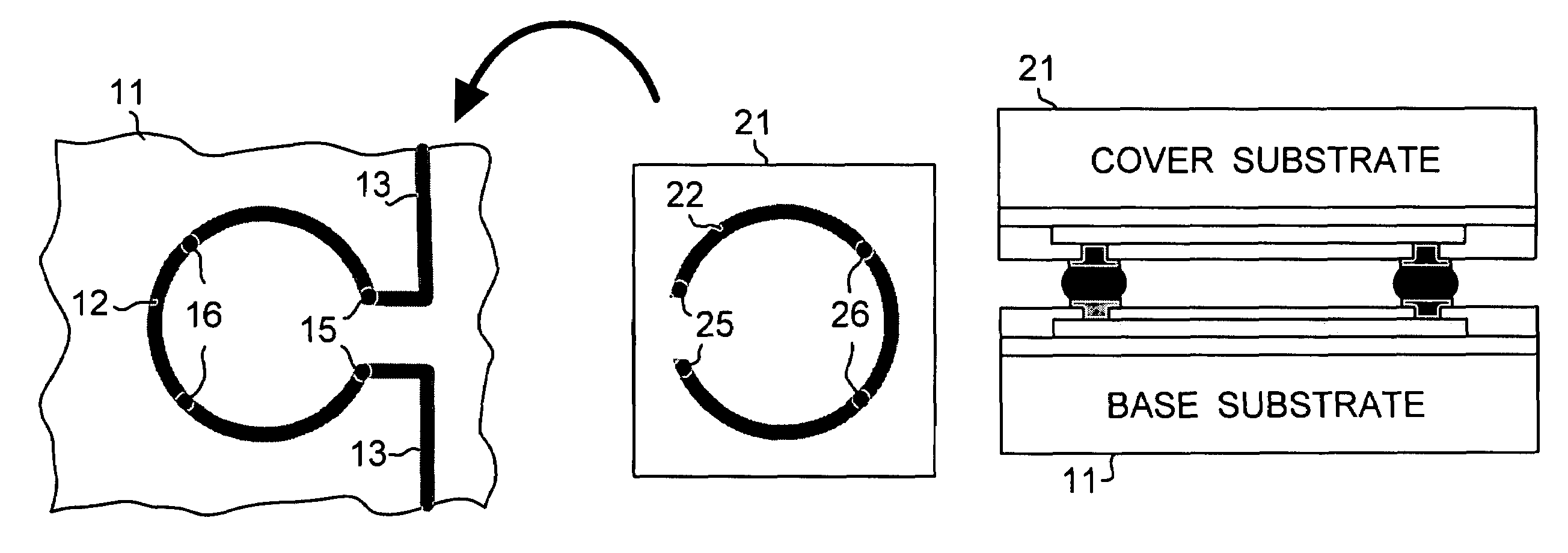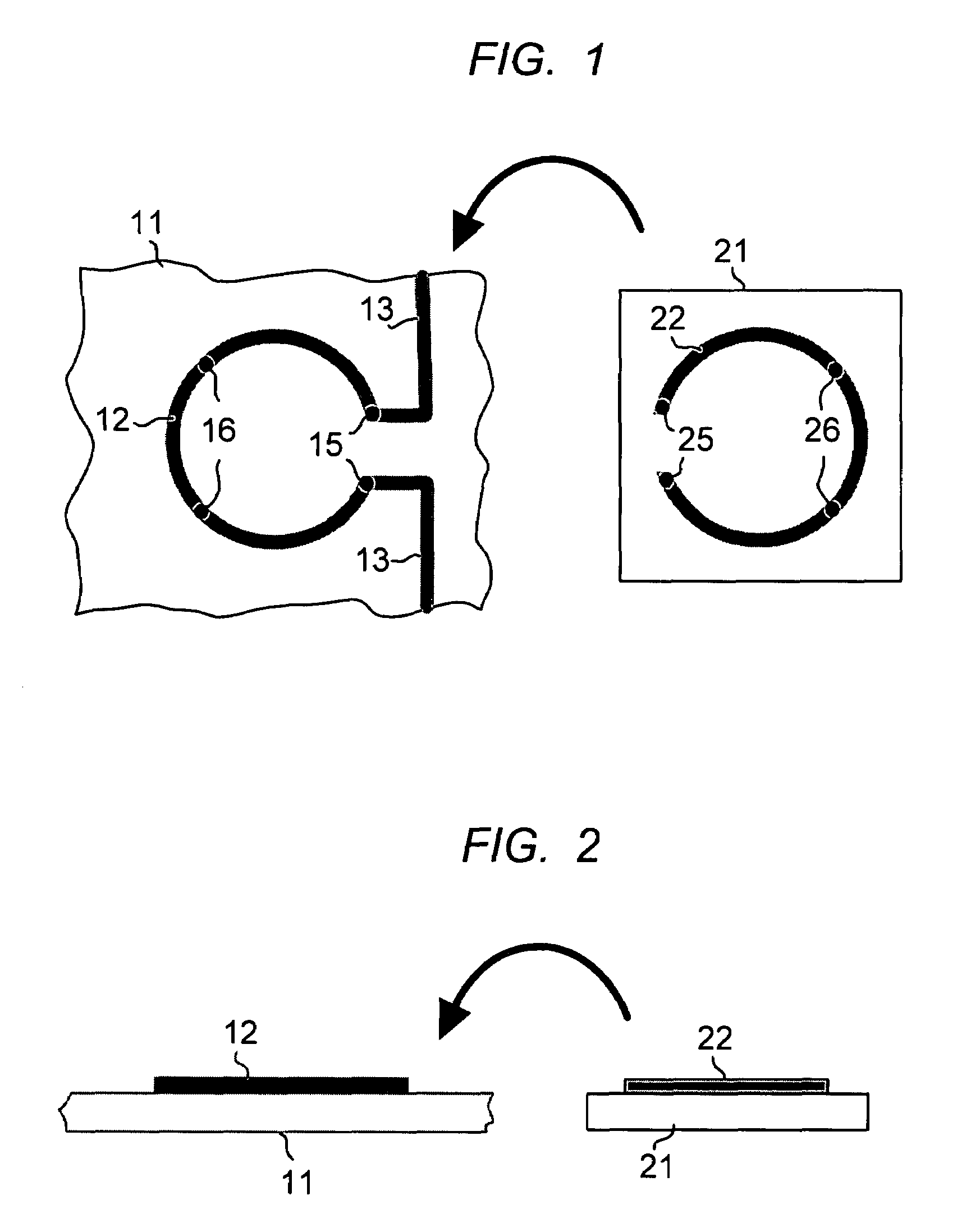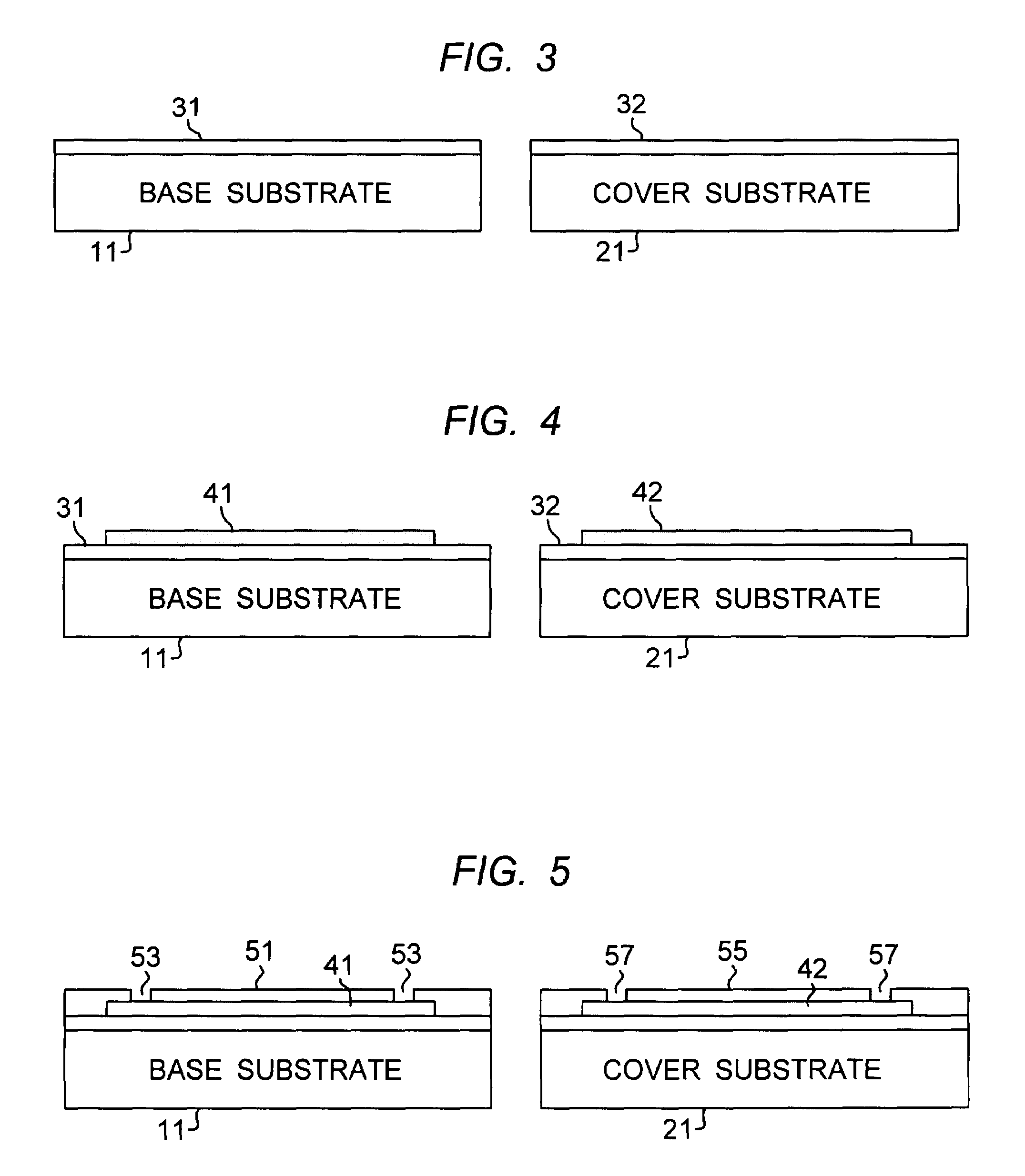Integrated passive devices with high Q inductors
a high-q, inductors technology, applied in the direction of inductors, transistors, basic electric elements, etc., can solve the problems of large mutual inductance, inconvenient design, and excessive linear space in a conventional ipd, and achieve the effect of high performance components and less demanding
- Summary
- Abstract
- Description
- Claims
- Application Information
AI Technical Summary
Benefits of technology
Problems solved by technology
Method used
Image
Examples
Embodiment Construction
[0020]FIG. 1 is a top view of the base substrate 11 and the cover substrate 21, each carrying half of the inductor structure. In the embodiment shown, the inductor body, comprising elements 12 and 22, is in the pattern of an arc greater than 270 degrees. The inductor body comprises a metal conductor, typically aluminum, copper, or other suitable conductive material. Interconnection runners to the inductor body 12 on the base substrate are shown at 13. Mating interconnections connecting the two halves of the inductor body are shown at 15 and 25. Intermediate interconnections, which are optional, are shown at 16 and 26. The use of intermediate interconnections in a stacked multilevel inductor is discussed in Yin et al., referenced earlier. The two substrates are shown in an elevation view in FIG. 2.
[0021]Substrate 11 is illustrated as a portion of a larger substrate. Typically one or both the base substrate and the cover substrate will have additional circuitry on the substrate. The a...
PUM
 Login to View More
Login to View More Abstract
Description
Claims
Application Information
 Login to View More
Login to View More - R&D
- Intellectual Property
- Life Sciences
- Materials
- Tech Scout
- Unparalleled Data Quality
- Higher Quality Content
- 60% Fewer Hallucinations
Browse by: Latest US Patents, China's latest patents, Technical Efficacy Thesaurus, Application Domain, Technology Topic, Popular Technical Reports.
© 2025 PatSnap. All rights reserved.Legal|Privacy policy|Modern Slavery Act Transparency Statement|Sitemap|About US| Contact US: help@patsnap.com



